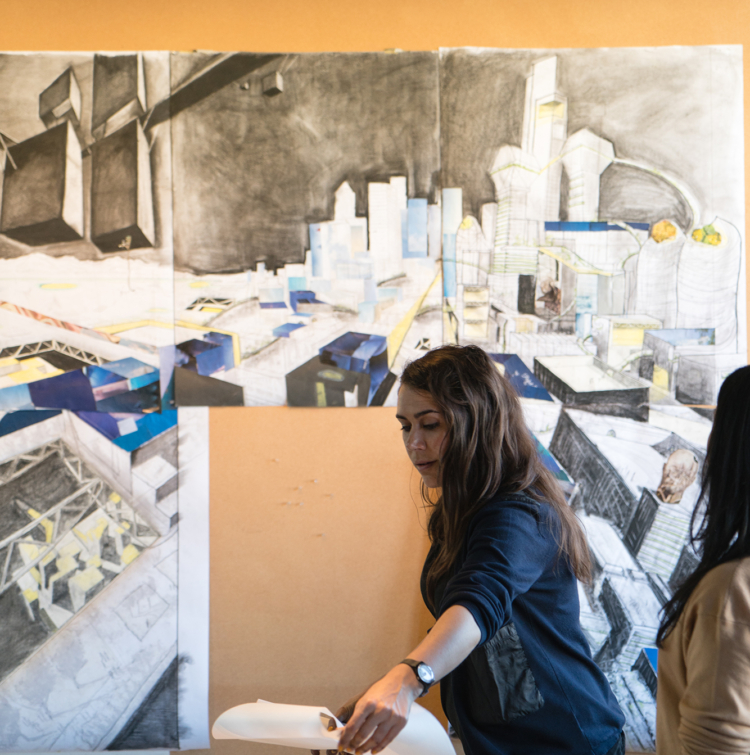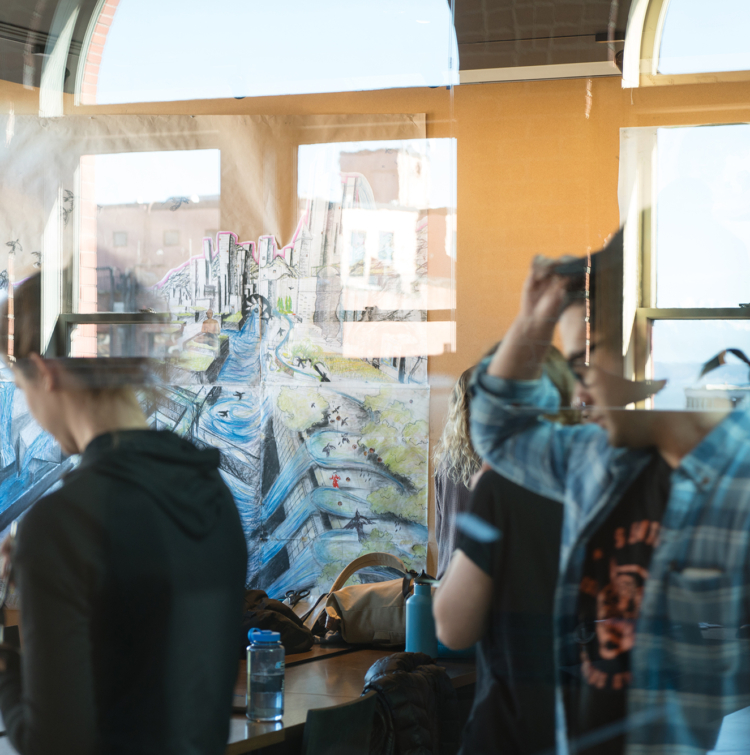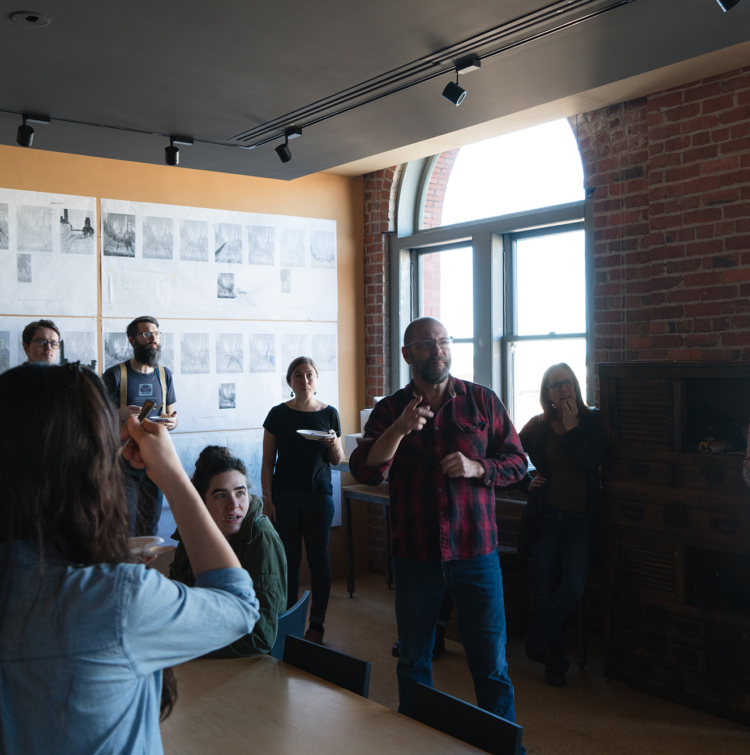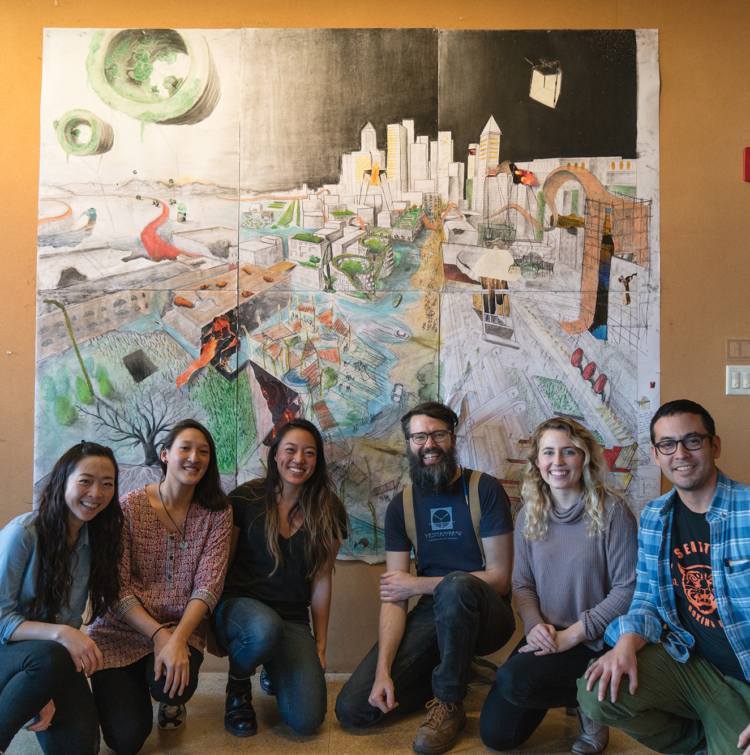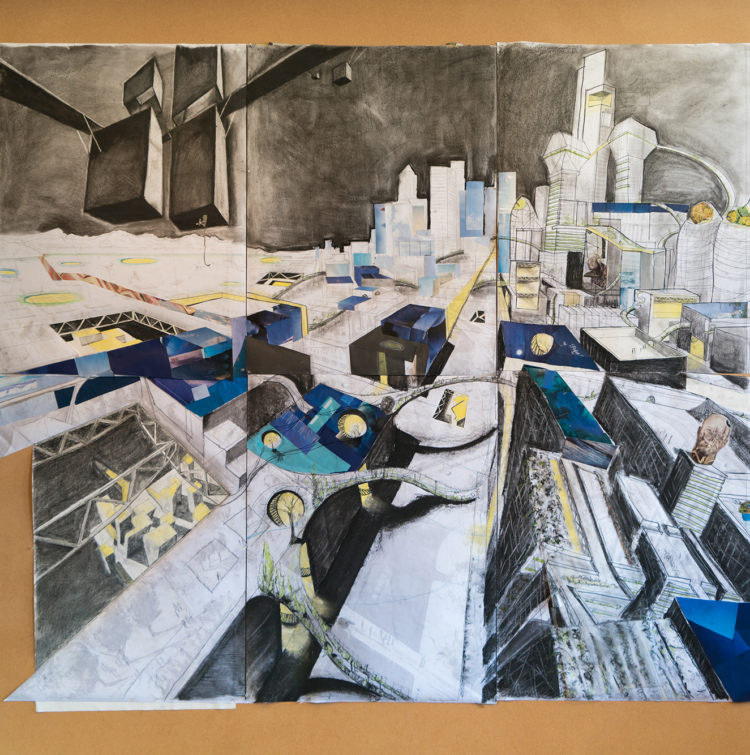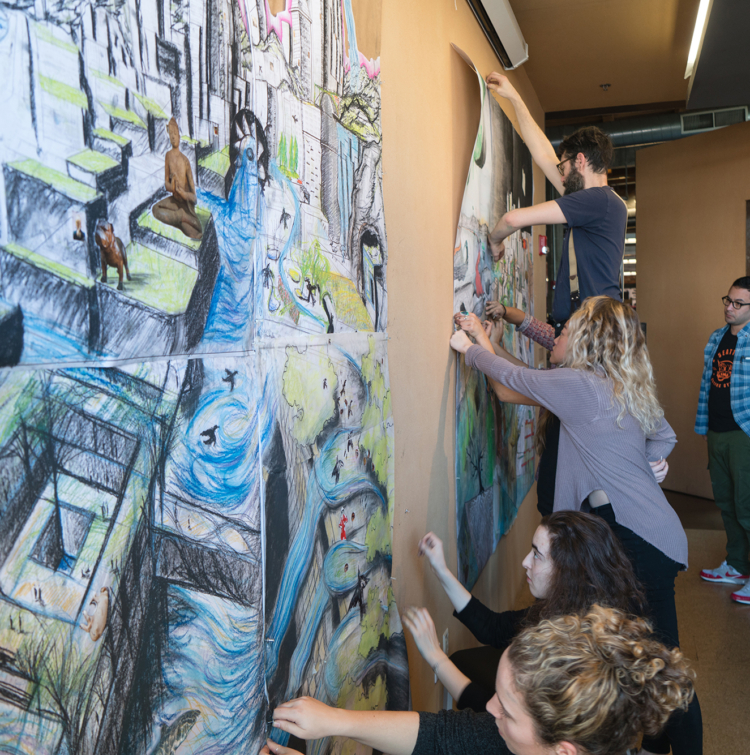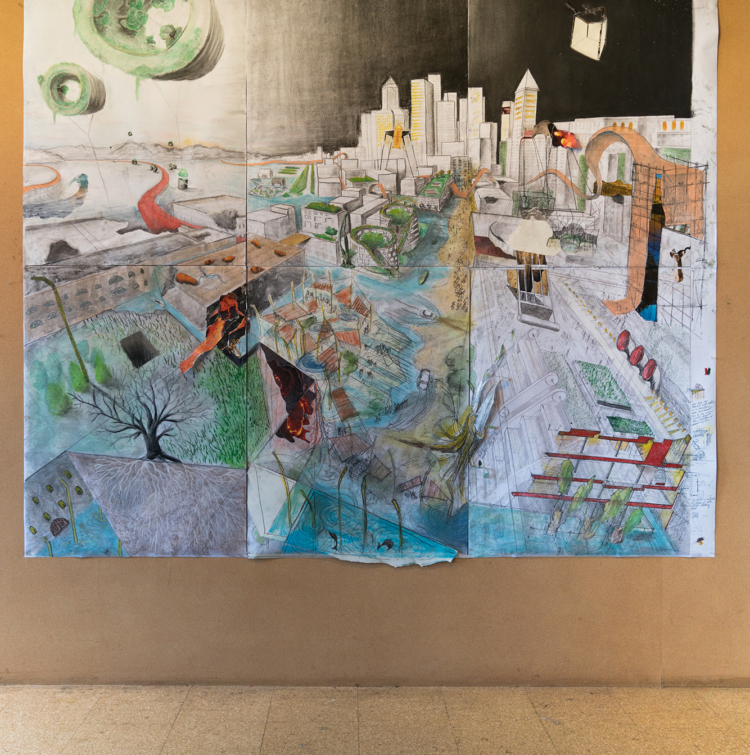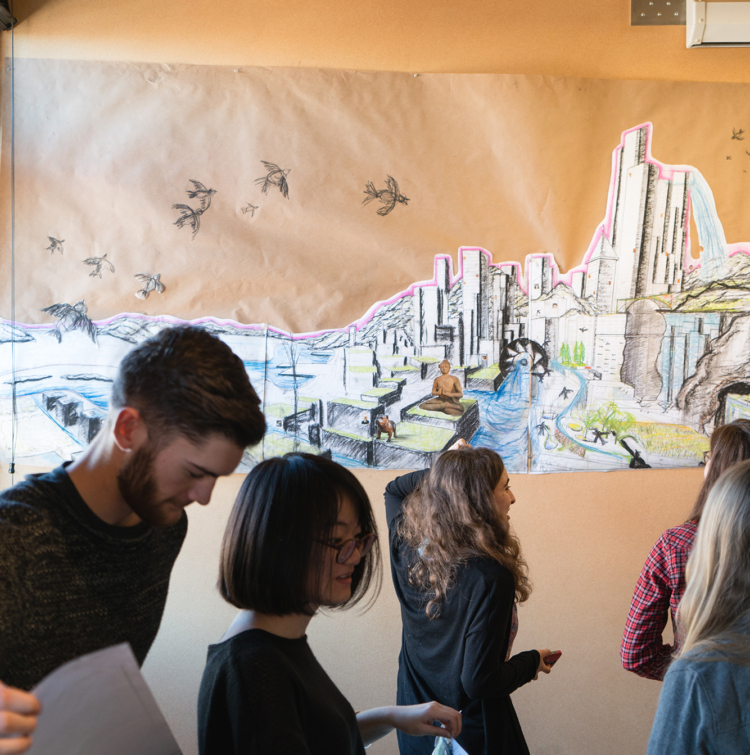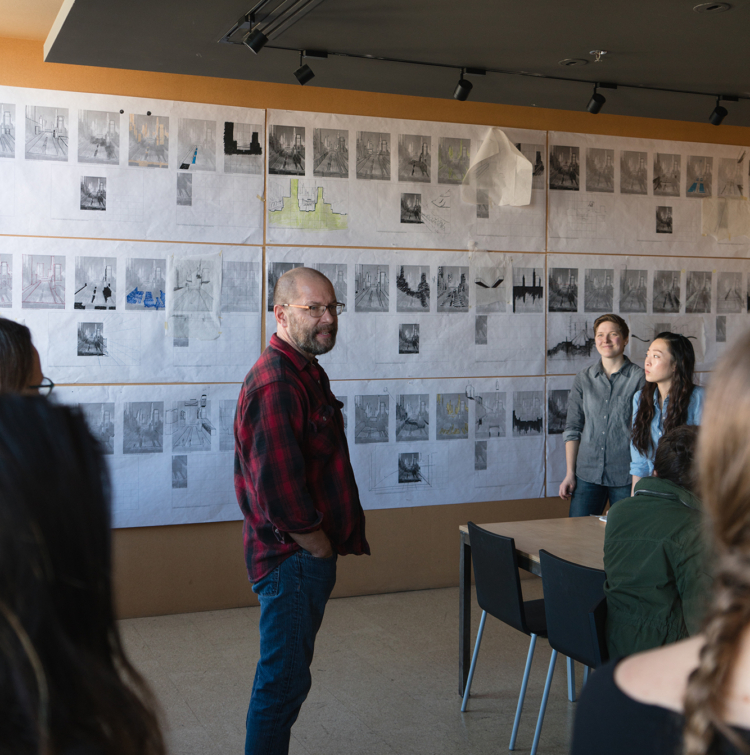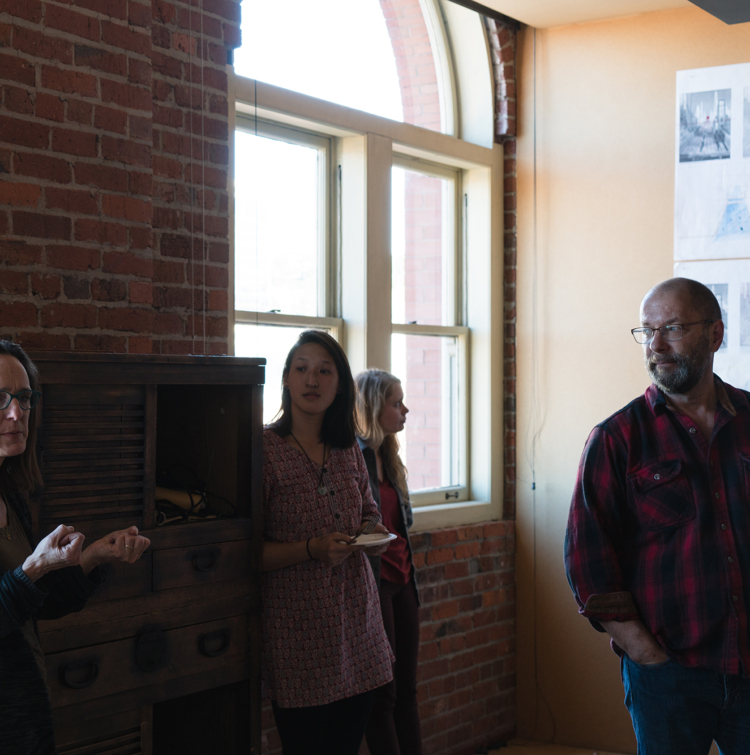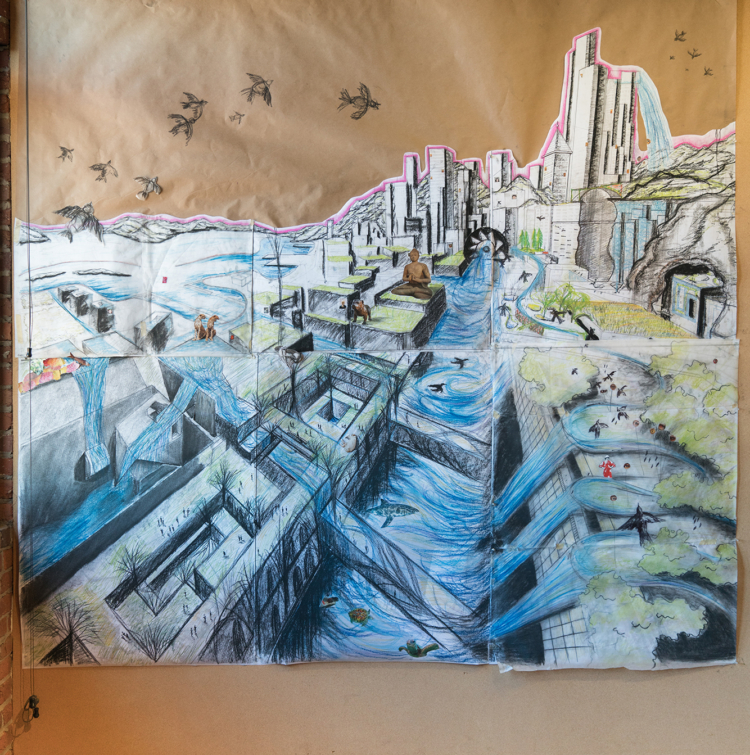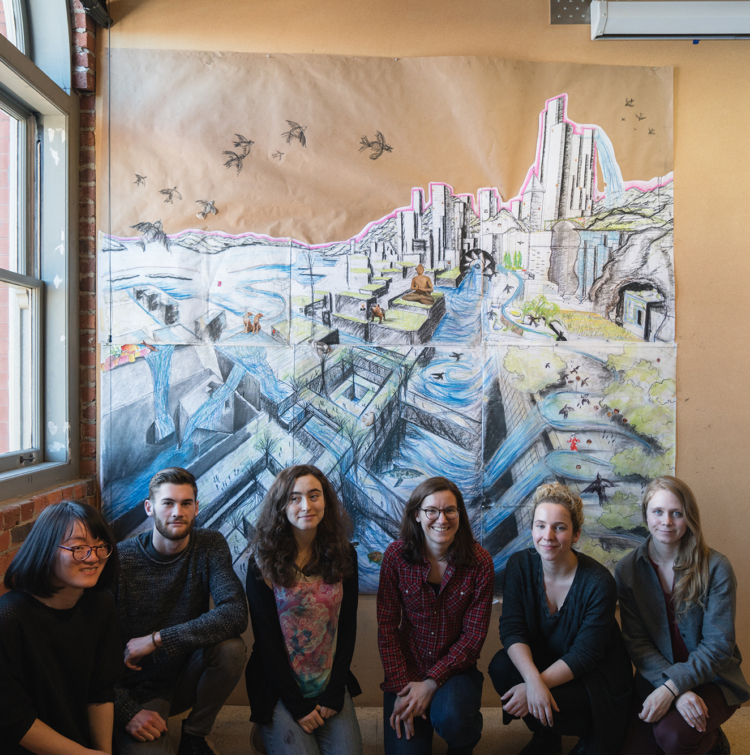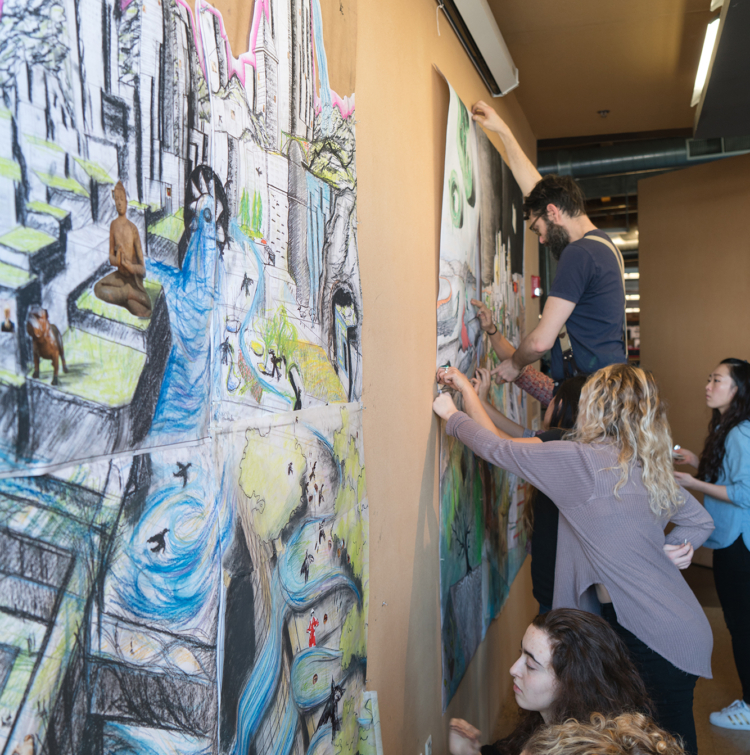Drawing in Design is a quarterly series of public lectures and weekend workshops for students that focus on representation in design and bring leading landscape architects and designers from across the country to our Department.
Student Perspective: Allison Ong, MLA
The workshop
Alan Maskin started with a presentation about his personal history and relationship with drawing, some of his work, and inspirations. On Saturday we spent the first half of the day doing some very quick exercises, which forced us to think about lineweights, shadows, perspective, and section. The rest of the weekend was spent on a group project that we worked on furiously through Sunday afternoon.
The workshop challenged us both technically and emotionally. On the technical side, we were constantly working at a large scale. At no point was the paper I was working on any smaller than 2’ x 4’. We worked in mediums I am uncomfortable and inexperienced with such as chalk and collage. On the emotional side I was constantly struggling with hesitation to make permanent marks, fear of messing up, anxiety about whether I could come up with anything original and creative, etc. It was really a weekend-long deep-sea dive into the wringer of drawing. Yet through all of these challenges our instructors created a very comfortable and supportive environment.
Why drawing is important to being a designer
Drawing is a way of communicating. Like any language, you get more fluent at using and understanding it through study and practice, which is what we did during the workshop. I think drawing is especially important for designers because it can convey an idea immediately and often with more persuasive detail than can a verbal or written explanation.
My experience as a student
Typically in the landscape architecture department, the only time we see professionals is for reviews and critiques. It felt very refreshing to work together with students and professionals from other disciplines. As landscape architects, we know that we will work with architects, planners, engineers, construction management, etc. once we are professionals. However, as students we rarely have the opportunity to interact with any of these groups.
This experience gave us an opportunity to work side-by-side as equals, which was really liberating. The weekend served as an inspiring reminder of the practical and impractical applications of our schoolwork as well as a reminder of the joy of creativity.
Student Perspective: Jean Ni, MLA
The workshop
We began with a Friday night lecture filled with inspirational ideas and images. Saturday began with several rapid-fire warm-up exercises, then transitioned into our 6-person collaborations on a larger project. I often get lost in the computer programs that are essential to creating graphic documents in school, and the weekend was a wonderful break to allow full exploration in the single medium of hand drawing. Some moments transported me back to elementary school-level exploration and play with materials, methods, and interactions with my team. This course felt like a no-stakes, fun, and experimental form of visual play and intellectual expansion. It is important for me to get outside of the academic pressures and that I often impose on myself during studio work, and develop skills while remembering that I actually enjoy drawing.
Why drawing is important to being a designer
Drawing is a way to communicate your ideas with others – being able to see rather than hear or read what someone is proposing is an effective way to share what is mentally perceived in your brain.
My experience as a student
I value interdisciplinary work in my everyday academic work, but have often sought this out in departments even outside of landscape architecture. It was great to engage with people in different specialties especially from CBE. I made some great contacts, got to know other people better, and enjoyed working outside of landscape architecture. Thanks to Olson Kundig and GGN for engaging with the UW students in this! It was awesome to work with professionals in the field and see their drawing process in the midst of our own.
Learn more Drawing in Design and watch previous lectures here.
